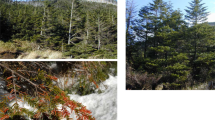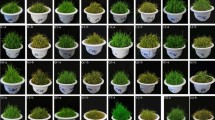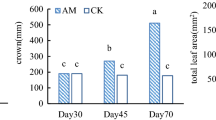Abstract
TWIGS which can survive freezing at approximately −70° C are not injured even when exposed to extremely low temperatures1–3. Twigs taken in the middle of November from willows, poplars, white birches, etc., have survived freezing at − 70° C, and therefore subsequent seasonal fluctuations in frost-hardiness and the effectiveness of ‘hardening’ treatment cannot be determined in these twigs by the usual freezing tests. To clarify the mechanism of frost-hardening in hardy plants, it is therefore essential to find a suitable method of determining the degree of frost-hardiness in plants which can withstand freezing below − 70° C.
This is a preview of subscription content, access via your institution
Access options
Subscribe to this journal
Receive 51 print issues and online access
$199.00 per year
only $3.90 per issue
Buy this article
- Purchase on Springer Link
- Instant access to full article PDF
Prices may be subject to local taxes which are calculated during checkout
Similar content being viewed by others
References
Parker, J., Nature, 187, 1133 (1960).
Tumanov, I. I., and Krasavtsev, O. A., Fiziologiya Rast., 6, 654 (1959).
Sakai, A., Low Temp. Sci., B, 22, 1 (1964).
Sakai, A., Low Temp. Sci., B, 14, 17 (1956).
Sakai, A., Nature, 185, 393 (1960).
Sakai, A., Low Temp. Sci., B, 20, 121 (1962).
Author information
Authors and Affiliations
Rights and permissions
About this article
Cite this article
SAKAI, A. Determining the Degree of Frost-hardiness in Highly Hardy Plants. Nature 206, 1064–1065 (1965). https://doi.org/10.1038/2061064a0
Issue Date:
DOI: https://doi.org/10.1038/2061064a0
This article is cited by
-
Aspects of the cold-hardiness mechanism in plants
The Botanical Review (1971)
Comments
By submitting a comment you agree to abide by our Terms and Community Guidelines. If you find something abusive or that does not comply with our terms or guidelines please flag it as inappropriate.



